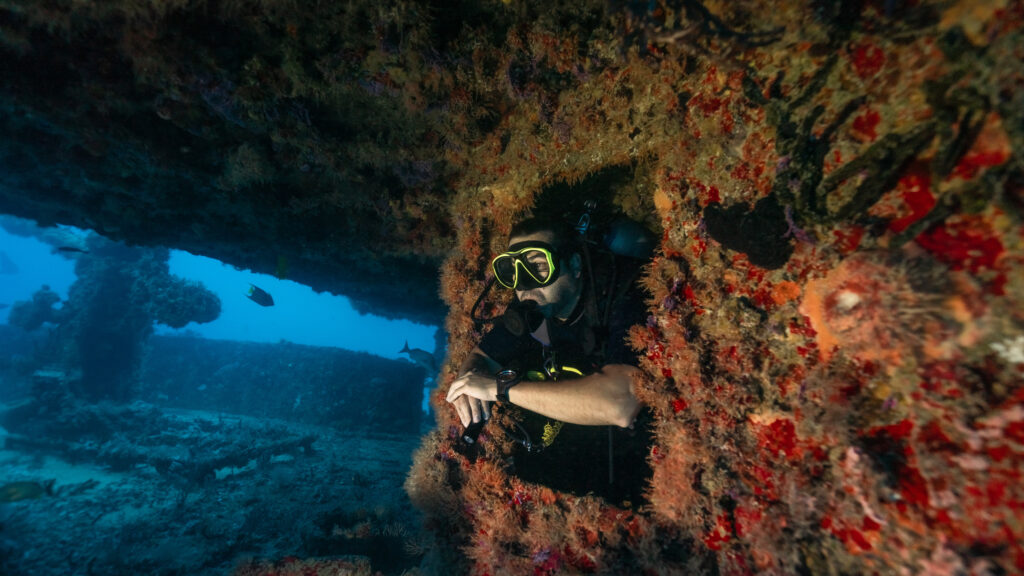What is Water Pressure when Diving?

Water pressure is a crucial concept in scuba diving, defined as the force per unit area exerted by the weight of water. The weight of the water column above a certain depth creates this pressure. This pressure is not just from the top down, but it is exerted equally from all directions. The deeper a diver descends, the greater the water pressure exerted on their body.
What is a Knot?

A knot is a unit of speed measurement used predominantly in maritime and aviation contexts. It is employed extensively in the fields of nautical navigation and scuba diving. The term “knot” is derived from the practice of counting the number of knots on a log line that unspooled from a ship over a specific period of time, which provided a measure of the ship’s speed. Today, the knot is defined as one nautical mile per hour and serves as a valuable metric for scuba divers and watercraft operators alike.
What is Vasoconstriction?

Vasoconstriction is the process by which blood vessels narrow due to the contraction of muscular walls in the vessels, primarily small arteries and arterioles. This biological phenomenon is significant in regulating blood flow and blood pressure throughout the body. For scuba divers, understanding vasoconstriction is crucial because it directly impacts how their bodies react to the underwater environment, including the cold temperatures and increased pressure that are often encountered during a dive.
What is an Electro Galvanic Fuel Cell (EGFC)?

An electro galvanic fuel cell (EGFC) is a type of electrochemical sensor used extensively in scuba diving equipment for oxygen monitoring. It operates based on the principle of generating an electrical current through a chemical reaction between oxygen and a fuel, typically a metal like lead or zinc. The current produced is directly proportional to the amount of oxygen present, making EGFCs crucial for ensuring safe breathing gas mixtures in underwater environments. This entry delves into the fundamental principles, historical development, technical specifications, applications in scuba diving, maintenance practices, and regulatory considerations of electro galvanic fuel cells.
What is the Maximum Operating Depth?

Maximum Operating Depth (MOD) is a critical concept in the field of scuba diving. It refers to the deepest depth at which a particular gas mixture can be used safely without the diver experiencing oxygen toxicity. Understanding and adhering to the MOD is essential for ensuring diver safety and preventing potentially life-threatening conditions. MOD varies depending on the gas mixture being used and is influenced by the partial pressure of oxygen within the breathing gas. By comprehending the significance of MOD, divers can plan their underwater excursions more effectively and reduce the risks associated with diving to greater depths.
What is Mixed Gas?

Mixed gas, in the context of scuba diving, refers to breathing gases other than air, which are used to extend bottom time, reduce decompression obligations, and manage the risks associated with deep diving. These mixtures can include combinations of oxygen, nitrogen, helium, and other inert gases, tailored to specific diving conditions and depths. By using mixed gases, divers can safely reach greater depths and explore environments that would otherwise be inaccessible due to the limitations of breathing air alone.
What is a Quad Cylinder System?

A quad cylinder system, commonly used in advanced scuba diving, refers to a configuration where four individual cylinders are used to supply breathing gas. This setup is particularly important for technical and deep-sea divers who require extended gas supplies and redundancy for safety. The evolution of scuba diving equipment has seen significant advancements, and the quad cylinder system represents a pinnacle of such technological progress. This article delves into the historical development, components, usage scenarios, safety considerations, and the advantages and limitations of quad cylinder systems, providing a comprehensive understanding of their significance in scuba diving.
What is a Gas Fraction?

In the context of scuba diving, a gas fraction refers to the proportion of each gas component within a breathing gas mixture. Understanding gas fractions is crucial for divers to ensure safe and efficient breathing under water. The significance of gas fractions cannot be overstated, as they directly influence dive planning, physiological effects on the body, and overall safety. By grasping the fundamentals of gas fractions, divers can make informed decisions that enhance their underwater experience while minimizing risks.
What is Ingassing?

Ingassing refers to the process by which gases dissolve into the body’s tissues and blood during scuba diving. This process is crucial to understand because it affects how divers must manage their time underwater and the ascent to the surface to avoid serious health risks. The term “ingassing” is often used in conjunction with its counterpart, “outgassing,” which describes the release of gases from the body. Both processes are central to diving physiology and safety, playing a vital role in dive planning and execution.
What is a Dive Table?

A dive table is a crucial tool in the practice of scuba diving, used to ensure divers can ascend safely without suffering from decompression sickness. These tables provide guidelines for how long a diver can stay underwater at various depths and the necessary surface intervals to avoid decompression sickness, also known as “the bends.” Dive tables are essential for maintaining diver safety, as they help manage the body’s intake and release of inert gases, such as nitrogen, which dissolve into the body tissues under pressure. By following dive table guidelines, divers can plan their dives to stay within safe limits, reducing the risk of injury from decompression.
